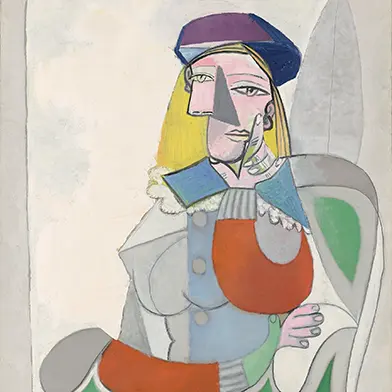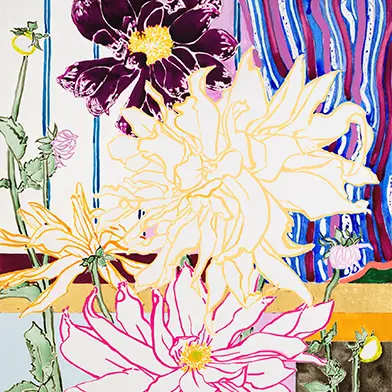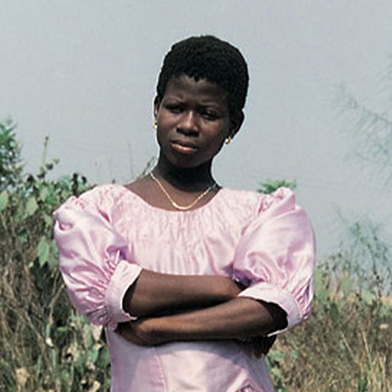Open: Mon-Fri 10am-5pm, Sat 10am-2pm by appointment
150 Manufacturing St, Suite 214, TX 75207, Dallas, United States
Open: Mon-Fri 10am-5pm, Sat 10am-2pm by appointment
Visit
Dr. Lakra: Oráculo Errático
Colector, Dallas
Sat 5 Apr 2025 to Fri 25 Jul 2025
150 Manufacturing St, Suite 214, TX 75207 Dr. Lakra: Oráculo Errático
Mon-Fri 10am-5pm, Sat 10am-2pm by appointment
Artist: Dr. Lakra
Colector opens the gallery’s new headquarters in the United States, located in Dallas, Texas, with “Oráculo Errático” a solo exhibition by Mexican artist Dr. Lakra.
Dr. Lakra’s artistic universe unfolds through a dynamic interplay of myths, idols, symbols, art history, and folklore. His work moves seamlessly across sculpture, painting, tattoos, and printmaking, constructing a visual language that is both intricate and elusive.
“Oráculo Errático” draws you into a world of disordered perceptions, where past and future intertwine asymmetrically. The oracle—a gateway to hidden knowledge, a portal to the unknowable, or a channel to the collective unconscious—serves as an apt metaphor for Lakra’s creative process. Yet this oracle is erratic, governed by randomness and fluidity rather than certainty. His practice embraces movement without a predetermined course, allowing images from disparate origins to intersect, clash, and mutate, generating a realm of ever-shifting visual revelations.
Towering totems carved with hybrid figures stand as sentinels of cultural amalgamation, merging religious symbols and effigies from African, Asian, and American traditions. These enigmatic forms summon an interplay between the mystical and the contemporary, drawing us into an experience that is both familiar and disorienting. Central to Lakra’s approach is the notion of cultural anthropophagy, a concept proposed by Oswald de Andrade that champions the consumption and reinterpretation of foreign influences. Within Lakra’s practice, this idea manifests as a challenge to rigid artistic hierarchies, dissolving distinctions between “high” and “low” culture and allowing for the simultaneous reverence and subversion of the iconic.
The exhibition further unfolds with the monumental Byōbu—a Japanese folding screen reimagined in steel and produced in Monterrey—which stands like a secular votive object. Its silhouette echoes ancient archetypal forms that resonate with the collective consciousness. Reminiscent of surrealist collage, it disrupts temporal boundaries, countering the ephemerality of contemporary experience with its weight and permanence. Through this *Byōbu*, Lakra engages in an ongoing dialogue between time, culture, and the enduring power of visual symbols.
In stark contrast, a collection of Murano glass sculptures emerges with an ethereal presence. These delicate yet provocative pieces evoke themes of eroticism, mortality, and desire, referencing 19th-century medical chromolithographs that have long fascinated the artist. The transparent and fluid nature of glass allows Lakra to explore the tension between attraction and repulsion—an emotional dichotomy that permeates his practice. Among them, a striking four-foot-tall red glass totem, crafted at the esteemed Venini atelier in Italy, commands attention. Functioning as both sculpture and luminous object, it serves as an invitation for contemplation and interaction.
Lakra’s engagement with printmaking is evident in a series of recent monotype works produced during his time in Oaxaca. These prints weave together historical references and contemporary imagery, merging religious iconography with elements of popular culture. His juxtapositions—at once unexpected and inherently connected—reveal a profound understanding of art history and a sharp, subversive humor. Each print operates on dual registers: offering visual pleasure while provoking deeper intellectual inquiry.
Further expanding his sculptural vocabulary, Lakra presents a selection of white Carrara marble works, their polished surfaces contrasting with the raw energy of the surrounding pieces. These sculptures reinforce his ongoing exploration of cultural hybridity. Here, anthropophagy assumes a sculptural form, absorbing diverse influences and reconfiguring them into hybrid entities that challenge conventional notions of Italian Renaissance artistic purity. Lakra rejects static definitions of cultural ownership, instead inviting audiences into a conversation about transformation, exchange, and the fluid nature of creative expression.
Through “Oráculo Errático”, Dr. Lakra constructs a space where history and myth, tradition and subversion, the sacred and the profane continuously collide and reconfigure. In this unpredictable landscape, images are never fixed—they evolve, dissolve, and reemerge, offering an experience that is as enthralling as it is enigmatic.
Jerónimo López Ramírez, known artistically as Dr. Lakra, was born in Mexico City in 1972. His work is held in major institutional collections, including the Museum of Modern Art in New York, the Walker Art Center in Minneapolis, and the Hammer Museum at the University of California, Los Angeles. He has exhibited at some of the world’s most prestigious institutions, such as Tate Modern and the Barbican Centre in London, MOCA in Los Angeles, the Museu d’Art Contemporani de Barcelona, and MARCO in Monterrey. This summer, his work will be presented at the Thyssen-Bornemisza Museum in Madrid, further cementing his standing as a key figure in contemporary art.







